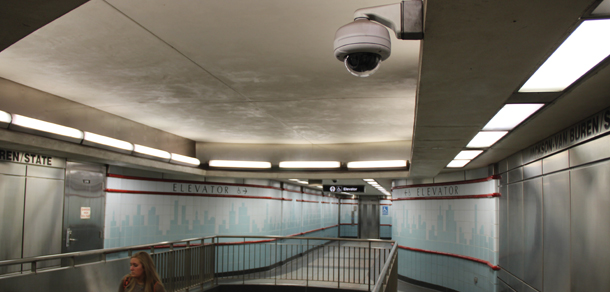Adding even more value to video surveillance
Identity and non-traditional use cases help orgs find funding
30 December, 2016
category:
By Adrian Turner, SIA Contributing Writer
On a train platform in Washington, D.C., a lone wanderer threw himself onto inside train tracks operated by the Washington Metropolitan Area Transit Authority (WMATA).
A train immediately pulls into the rail station, passing over the supposed suicide jumper. A long minute passes, and then remarkably the individual emerges unscathed from under the train. The man had survived his suicide attempt, but instead of being grateful, he makes an obscene gesture at the driver.
That was the scene depicted on a video screened by WMATA Deputy Chief Engineer Marshall Epler at the 2016 SIA Government Summit in Washington. Epler showed the video to private and public sector security personnel, drawn from the security industry and government agencies, to demonstrate the dual uses of video surveillance technology. Although WMATA depends on video surveillance for security, the agency also uses the tool for safety and other purposes as well, extending its utility across its operations.
Using a physical security information management (PSIM) system, WMATA integrates cameras across its transportation system via software. When an incident occurs – like a suicide attempt – they can see what is transpiring in real time from a command center as the PSIM activates the camera closest to the event. The cameras can also work in tandem with the WMATA smart card, known as “SmarTrip,” which passengers use to enter transit stations and ride trains and buses.
IP cameras are really a computer with a lens, and the processing power continues to increase much like that of a smart phone
Each SmarTrip card has a unique identifier, Epler says. As such, the movements of an individual card can be tracked throughout the Metro system. And if purchased or refueled with a credit card, WMATA can link the SmarTrip card to a residential address even if it’s not registered through the identification code. WMATA video cameras generally provide 60 pixels of resolution per foot, good enough to identify the faces of people traveling through the system. The video surveillance, coupled with the smart card information, is often enough to confirm the identity of bad actors, Epler says.
Anthony Incorvati of Axis Communications chairs SIA’s Transportation Policy Working Group and moderated the panel on which Epler was speaking. He emphasized that the benefits of security technology have moved beyond traditional security applications.
IP cameras are really a computer with a lens, and the processing power continues to increase much like that of a smart phone, Incorvati says. “A computer with a lens provides an open platform for more intelligence to be pushed to the edge. IP cameras have opened up to allow third-party developers to create applications that reside on the camera.”
For example, an airport in Texas placed cameras at the entrances to its restrooms – not to peer inside but to keep watch on the entranceway. The cameras provide a security benefit, but they also have other uses such as counting the number of individuals who enter each restroom. When that count hits a certain number, the camera automatically notifies a cleaning crew.
SIA works closely with the American Public Transportation Association (APTA) on security issues confronting public transit owners and operators. APTA is a big tent with lots of members of varying size and interests, but the association tries to help all of its members with technical services support, explains Randy Clarke, acting vice president for Member Services at APTA.
Public transit supports 11 billion trips annually, 16 times more than airlines, Clarke says. Almost all people riding public transit go through little to no security checks. “It is all open architecture, all designed to move people. Our business in transit is speed and efficiency of moving people,” Clarke explains. “It’s very hard to get the counterbalance of security while fulfilling our mission of moving people.”
“It’s an unbelievably porous environment with a lot of people and [therefore] a difficult place to maintain security,” he adds.



